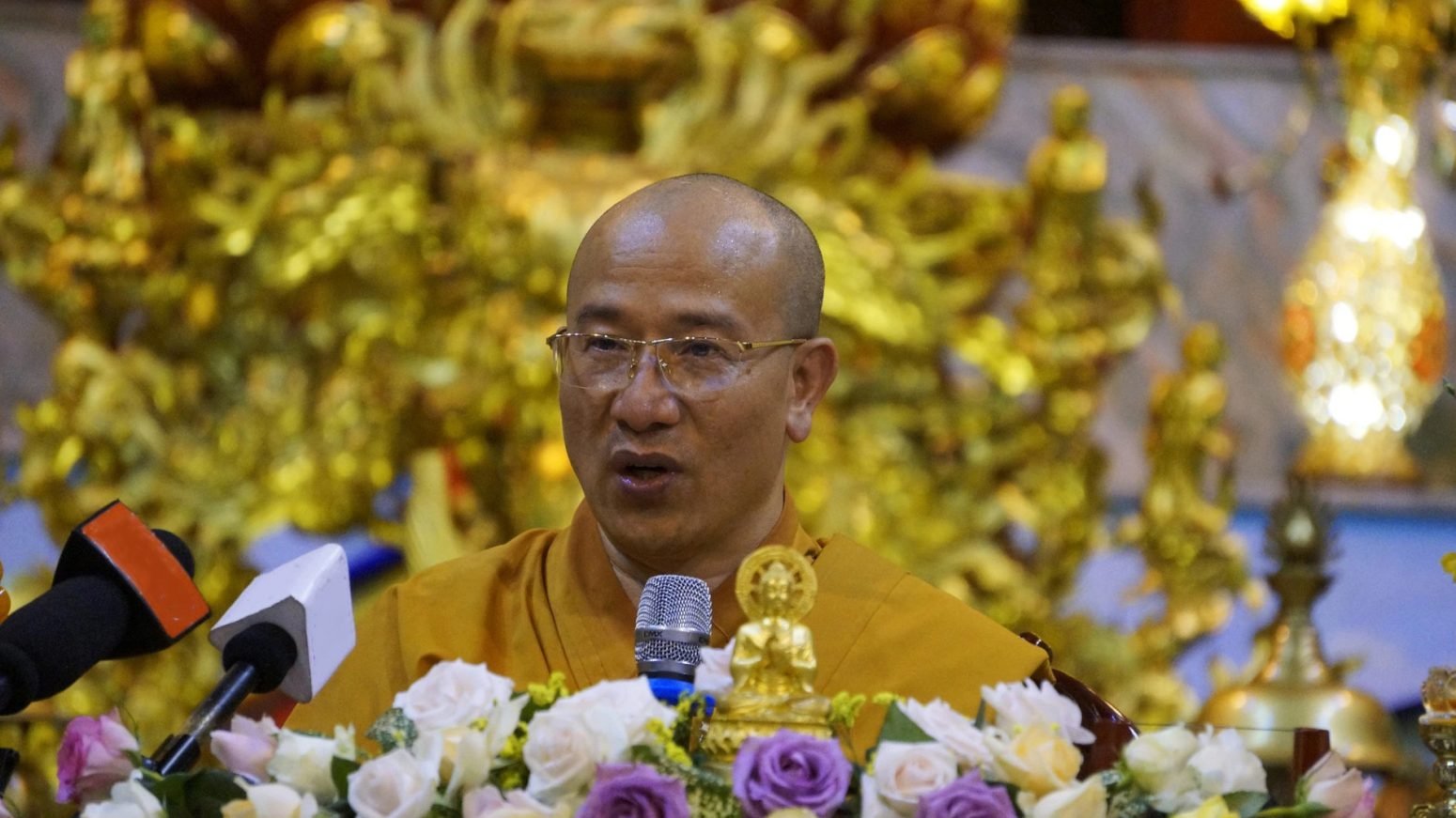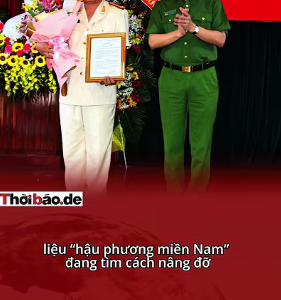
On December 27, Thanh Nien newspaper published the news „Thousands of people worship Buddha’s hair relics at Ba Vang Pagoda.“
It is unclear where did Thich Truc Thai Minh took a hair that looked like a hair, but could move on its own, and informed the temple to the people that it was a hair relic of the Buddha from 2,600 years ago.
This information caused tens of thousands of superstitious people to come and worship.
Of course, to sanctify this hair, the „devil monk“ Thich Truc Thai Minh created a legend that it was one of the eight hairs that the Buddha personally plucked from his head and gave it to two merchants from Myanmar more than 2,600 years ago. Buddha’s hair relics were said to have been kept for thousands of years in Myanmar, now appearing for the first time at Ba Vang Pagoda.
According to the representative of Ba Vang Pagoda, the Buddha’s hair relic has the ability to move on its own like a living object. The hair relic has the same shape as a normal hair, but moves gracefully left and right, spins, curves up and down, without any impact. Even when encountering an obstacle, the hair can even pop out on its own.
However, after searching for information online, we learned that this is Pili grass (Heteropogon contortus)- a flowering plant in the Heteropogon species. When exposed to water, this Pili grass reacts with a wriggling movement. If you go to Youtube and type in the keyword „Pili Heteropogon Contortus„, there are many clips proving that.
That’s the truth, but Thich Truc Thai Minh took advantage of the people’s ignorance and curiosity to create a public superstition.
If Buddha’s hair could still be preserved today, then his hair would be the same as ordinary human hair, without any divinity. Buddhism does not preach superstition. Buddha is the path of practice, because Shakyamuni Buddha went before and discovered this path. He taught sentient beings this path to escape suffering, the ultimate goal is to overcome the cycle of birth and death. Anyone can understand the Four Noble Truths, if they are willing to read and study Buddhist scriptures. Anyone can practice the Noble Eightfold Path to become a Buddha. These are clearly recorded documents, nothing mysterious.
This is not the first time Thich Truc Thai Minh has played tricks to deceive Buddhists and people. In the past, the press and public opinion have repeatedly exposed superstitious practices for profit taking place at Ba Vang Pagoda.
It is known that Thich Truc Thai Minh organized the display of „grass“ which was enchanted into „Buddha relics“ on the occasion of the Great Ceremony to celebrate the 765th birthday of Buddha Emperor Tran Nhan Tong, a big holiday of a Buddha, a king, a national hero, of whom Thich Truc Thai Minh took advantage to carry out a superstition, of course, not excluding profiteering schemes. This is a blasphemous act, not a way to celebrate the birth of Buddha Emperor Tran Nhan Tong.
Many people after watching the clip said that Pili Heteropogon Contortus grass is for sale on e-commerce platforms, with prices ranging from VND500,000-VND900,000 per stem. There is nothing mysterious, it’s just that Thich Truc Thai Minh saw that people did not know about this type of grass, so he took advantage of it to create events, attracting the ignorant and curious.
If you want to make money by selling selling gods, you must first attract superstitious people to the temple. Because superstitious people are the ones who spend the most money on scams. Therefore, Thich Truc Thai Minh kept thinking, finding something mysterious, strange, and easy to seduce, so that superstitious and curious people would follow him. When these people believe him, this demon monk will think of many ways to extort money from their pockets.
Thich Truc Thai Minh has a passion for doing business, but doing business through scams. However, he still stands tall, not knowing, who did he pay for to turn a blind eye to let him practicing such superstition?
Thoibao.de (Translated)























